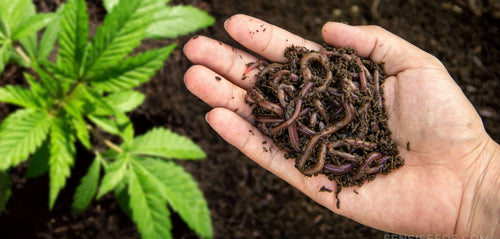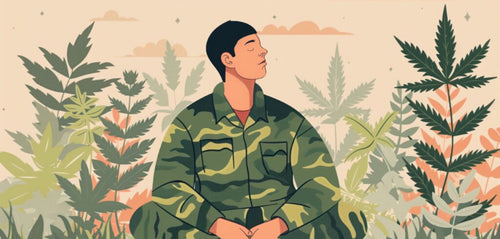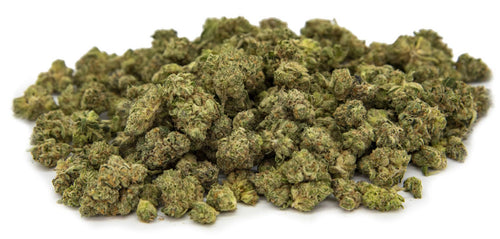#38: High on Creativity: How Cannabis Fuels the Fire of Imagination
#38: High on Creativity: How Cannabis Fuels the Fire of Imagination
Creativity is the mysterious force that pushes us beyond the boundaries of convention, sparking innovations and transformative ideas. It's an essential element of human expression, shaping everything from the arts to technology. Yet, one might wonder, what fuels this creative fire? Among the myriad of influences, there's one that has sparked curiosity for centuries - cannabis.
Historically, cannabis has often been associated with the realm of the creative. Artists, musicians, writers, and thinkers across the ages have claimed it as a muse, citing its ability to inspire fresh perspectives and stimulate original thought. Yet, these claims are often met with skepticism. Is there a genuine link between cannabis and creativity, or is it just a myth?
Recent research suggests that cannabis can indeed play a role in creative pursuits. Studies have shown that using cannabis can lead to increased divergent thinking, which is the ability to come up with multiple solutions to a problem. This concept forms the foundation of creative problem-solving and is considered a cornerstone of inventive thinking. Cannabis has also been linked to an increased sense of openness, which can lead to a greater willingness to explore ideas and take risks.
We'll look at the relationship between cannabis and creativity in more detail, traverse through history, delve into anecdotal accounts, and explore scientific studies, all in a bid to understand if and how cannabis influences creativity. So, if you're a seasoned artist looking for a new source of inspiration, a recreational cannabis user curious about its cognitive effects, or simply an intrigued reader, we invite you to join us on this enlightening journey.
Cultural roots: The historical tapestry of cannabis and creativity
The intertwining of cannabis and creativity is not a recent phenomenon. Its roots stretch back centuries, woven into the fabric of various cultures and creative communities worldwide.
In India, cannabis has long been revered for its spiritual and medicinal properties. In the Hindu religion, it is associated with the divine and is celebrated in various festivals and rituals. It's also embedded in many creative practices such as music, poetry, and dance.

In Medieval Europe, cannabis was used by writers, musicians, and painters alike. Its psychoactive effects were thought to stimulate the imagination and help open the mind to creativity. It was also used by famous figures such as Victor Hugo, Lord Byron, and Honoré de Balzac in the 19th century, who all claimed cannabis to be a source of inspiration.
Fast forward to the modern era, and you'll find that cannabis continued to be a companion for many creatives. The counterculture movement of the 1960s and 70s saw an explosion of cannabis use among artists, musicians, and writers. This period gave birth to some of the most iconic and influential works of art, music, and literature—many of which were created under the influence of cannabis.
This trend has carried into the present day, with numerous notable figures openly discussing their use of cannabis in their creative processes. Take Grammy-winning artist Lady Gaga, for example, who has spoken about how cannabis helps her write music.
At this point, it's clear that cannabis has been connected to creative pursuits for centuries. But can we look beyond anecdotal claims and find tangible evidence of a link between cannabis and creativity? Let's explore science-backed studies to find out more.
Cannabis and cognition: How it sparks creative genius
As fascinating as the historical anecdotes are, the real intrigue lies in unpacking the science behind cannabis and creativity. How does this plant interact with our brain, and how can these interactions potentially enhance our creative faculties?
The key player in cannabis that affects the brain is THC (tetrahydrocannabinol), the plant's primary psychoactive compound. When consumed, THC binds to cannabinoid receptors—primarily CB1 receptors—in our brain. These receptors are part of a larger network called the endocannabinoid system, which plays a crucial role in managing a host of functions, including mood, memory, and yes, creativity.

Now, let's explore the brain's creativity center—the frontal lobe. This region is responsible for problem-solving, planning, and creative thinking, among other things. When THC interacts with the CB1 receptors in the frontal lobe, it alters the usual flow of thoughts and ideas. This alteration can lead to more abstract thinking, fewer mental restrictions, and a heightened ability to make novel associations—all vital elements of creativity.
Simultaneously, THC stimulates the release of dopamine, a neurotransmitter associated with the brain's reward system. The boost in dopamine levels can enhance mood, relaxation, ideas and openness, which can create an ideal environment for creativity to thrive.
However, it's essential to remember that cannabis doesn't directly create creativity. Instead, it may help remove mental blocks, making way for new perspectives and ideas. Like many tools in the creative process, the effectiveness of cannabis will depend on how it's used—and who's using it.
Rhythm and reefer: Cannabis' impact on musical creativity
The relationship between cannabis and music is as old as time itself, or at least as old as their mutual existence. From classical symphonies to modern-day hip-hop, cannabis has left its mark on numerous music genres, influencing the creation and appreciation of music.

Jazz, for instance, has a long-standing association with cannabis. During the early 20th century, jazz musicians often used cannabis to enhance their improvisation skills, claiming it helped them break free from traditional music structures and explore new rhythmic possibilities. Notable figures like Louis Armstrong were known for their cannabis use, with Armstrong considering it integral to his art.
Similarly, in the realm of rock and roll, cannabis played a significant role. Iconic bands like The Beatles and Pink Floyd have openly discussed how cannabis influenced their music, leading to groundbreaking albums that pushed the boundaries of the genre.
In recent times, the bond between cannabis and music is perhaps most visible in the world of hip-hop. Artists like Snoop Dogg and Wiz Khalifa regularly reference cannabis in their lyrics, music videos, and public personas. They also attribute their creative inspiration and lyrical prowess to their use of cannabis.
Beyond creation, cannabis also influences music appreciation. Many listeners claim that cannabis enhances their music experience, making sounds richer and enabling a deeper emotional connection to the music.
The art of elevated perception: Cannabis in the visual art world
Visual arts, a realm where creativity reigns supreme, has also seen the influence of cannabis throughout history. This influence is often manifested in the form of heightened imagination, altered perception, and increased openness to new ideas—all key components of visual creativity.

Cannabis' impact on visual creativity can be profound. Its psychoactive properties can distort perception, allowing artists to see the world through a different lens. This altered state of consciousness can lead to innovative interpretations of colours, shapes, and patterns, thereby influencing the creation of unique and original artwork.
Many visual artists have harnessed these effects, incorporating cannabis into their creative process. For instance, famed glass artist Bob Snodgrass, known for revolutionizing the art of glassblowing and creating the first colour-changing glass pipes, was an avid cannabis user.
Contemporary artists, too, have drawn inspiration from cannabis. Take the example of artist Alex Grey, whose artwork is heavily influenced by his use of cannabis. His signature style, which often combines elements from spiritual traditions with abstract shapes and cosmic visions, has made him one of the most renowned visionary artists in the world.
The effectiveness of cannabis in enhancing visual creativity depends on various factors, including individual tolerance, the strain of cannabis used, and the artist's personal approach to their craft. As such, while cannabis can be a powerful tool in the creative process, it's not a universal solution or shortcut to artistic brilliance.
The literary high: Cannabis' impact on the written word

The written word is a powerful vehicle for creativity, capable of transporting readers to different worlds, invoking deep emotions, and challenging perceptions. For some writers, cannabis serves as a catalyst in this creative journey, potentially enhancing their writing abilities and enriching their narratives.
Cannabis can influence writing in several ways. Its psychoactive properties may encourage divergent thinking—an essential component of creative writing—allowing authors to explore unconventional plotlines, create vivid descriptions, and craft complex characters. It can also stimulate introspection, helping writers delve deeper into their thoughts and emotions, thereby adding depth and authenticity to their work.
Acclaimed screenwriters such as Quentin Tarantino and Seth Rogen have cited cannabis as their muse, attributing its effects to the success of their work. What's more, many acclaimed poets—including Allen Ginsberg and Maya Angelou—have reported using cannabis to reach a state of heightened creativity.
The impact of cannabis on writing—like all creative pursuits—is highly individualistic. Factors such as personal tolerance, the strain of cannabis used, and one's innate writing skills play significant roles in determining whether cannabis enhances or hinders the writing process. Therefore, while cannabis can serve as a creative tool for some, it doesn't guarantee literary success.
"I smoke a lot of weed when I write, generally speaking. I don't know if it helps me write. It makes me not mind that I'm writing. And I don't know if it makes me work better, but it makes me not care that I'm working. Who wants to work? But if you're stoned, it doesn't seem like work." ~Seth Rogen
The last puff: Reflecting on the creative journey with cannabis
The relationship between cannabis and creativity is a fascinating, complex tapestry woven through centuries of human history. From music to visual arts, from writing to improvisational performances, cannabis has been a companion to many creatives, potentially enhancing their ability to think beyond conventional boundaries and generate original ideas.
While cannabis has played a role in the creative processes of numerous artists, writers, and musicians, it doesn't create creativity out of thin air. Creativity is a multifaceted process, a confluence of experiences, skills, emotions, and thoughts. Cannabis is merely one tool that can potentially influence this process.
So, whether you're a writer seeking fresh perspectives, a musician experimenting with new rhythms, or an artist exploring different mediums, don't be afraid to explore the potential of cannabis in your creative pursuits. It may just be the spark you need to take your work to the next level!
Back to all posts









